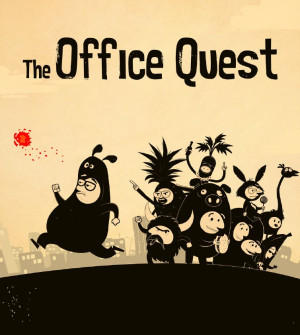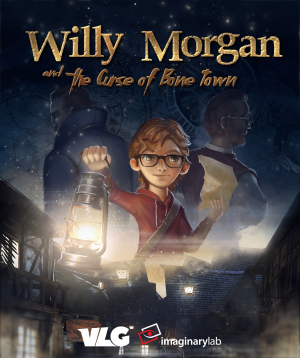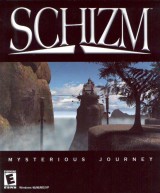Review for The Office Quest

The call to adventure is not just for those who seek fame and glory. Sometimes it is answered by people who just want to break from routine and stretch their legs a little. Such is the case for the protagonist of The Office Quest, a third-person side-scroller set in a unique world inhabited by wacky characters in onesie costumes. As one such person, you end up involved in a bizarre quest after deciding to investigate a strange phenomenon that occurs at your office building. A nonsensical yet charming tale filled with challenging puzzles and lots of creativity ensues, though it has problems trying to keep its narrative choices and gameplay mechanics from clashing with each other at times.
The game starts with the protagonist, an unnamed man wearing a pear-shaped costume, experiencing a normal day at work. That is, until the flower on his desk turns as grey as the rest of the monochromatic surroundings after its color suddenly flies away. It is unclear how or why this happens, or why the pear-man decides to chase after it, but since the plot is nonsensical in an Alice in Wonderland kind of way, it is best not to think too much about it. After all, this is a place where monitors can be animals, juggling is a corporate skill, and everyone wears full body costumes for no good reason. Don’t think: feel.
In this surreal world, work and work-related situations don't end just because you leave your office. There’s a traffic jam in the desert, middle-aged men on an island made out of televisions, and blue-collar workers doing their shifts on a bridge above the clouds. The quest for the runaway color is mostly a linear and silly experience where the protagonist tries to find the fastest way to deal with weird requests, fix all sort of machines, or sneak past people blocking his way, only for the color to find a new way to move beyond his reach again. And yet it’s still capable of some heartfelt moments, especially in the second half. My biggest surprise was that the protagonist, despite looking like a grump, is actually quite likeable. I enjoyed his feats of mischief throughout the game as he sneaks past bosses and co-workers, as well as how smug he gets when he solves a problem and, especially, the friendship he develops with a musician in a chicken costume.
The warm sepia-toned palette, goofy-looking characters, serene landscapes and chill background music set a relaxed mood for most of the adventure. There is no dialogue, so the story and humour depend on the absurd situations encountered and the expressiveness of the characters, both of which are very fluidly animated, like when the protagonist gets electrocuted while changing a lightbulb, or when a man dressed as a pig breathes fire on a co-worker after drinking a cup of very spicy coffee. All these elements nicely complement the atmosphere, making the journey a pleasant experience where I just went with the flow and embraced the weird.
Unfortunately, some mechanical aspects have a tendency to interfere, making things go not so smoothly. First of all: the loading times. The story is divided into four chapters, each with its own set of scenarios consisting of two to three areas to explore before moving onto the next. The problem is, every time you enter a new area, trigger certain cinematics or start a new chapter, you get a loading screen with a waiting time of several seconds. It doesn’t sound like a lot, but it happens frequently enough to become annoying, especially considering that this is an already slow-paced game. Fortunately, each screen shows a variety of funny illustrations of the characters in silly situations to make passing through them more enjoyable, and even with all the pauses the game isn’t that long, taking around six hours to complete.
The second issue is the save system, which saves automatically whenever you reach a new scenario but offers no way to record your progress manually. While this is becoming increasingly common, it became an issue in certain parts here where I got stuck after finishing a complicated puzzle but before reaching a new area, since it forced me to finish that section completely before quitting or else have to re-do the same steps later. There’s also the problem of constantly having to remember when you last saw the save icon flashing in the corner of the screen before deciding to exit the game.
Gameplay-wise, The Office Quest uses a standard point-and-click control scheme with a one-button interface for performing actions on PC. You’ll collect items along the way but aren’t required to interact with the inventory, as acquired objects are automatically used when clicking where they are needed. The keyboard is only used in certain minigames, like in a short platforming sequence where you guide a bird as it jumps and flies through the insides of an ATM.
Since the game has essentially no dialogue (apart from a few single-word utterances here and there), most of the clues and instructions are delivered through iconography. Animated tutorials are used to show, for example, how to move pieces in a board game, or to explain the conditions for a puzzle that involves drawing a pattern in a specific way. The characters communicate using speech bubbles with pictures when they want to ask you for something, and while sometimes they’ll give clues on how to move forward, they also pose challenges, like presenting puzzles where you have to guess which picture completes a logical pattern.
The only real issues that can arise in completing puzzles and minigames relate less to their own logic and more on minor visual and interface inconveniences. This brings me to the biggest problem of the PC version, which is that the game’s whimsical presentation of an already absurd world makes relying on visual clues a bit complicated. To deal with this, the mobile release has not one but two features that the PC version does not. The first is a hint system that, when activated, shows a brief scene of the main character doing something without context in order to provide a clue on what to do next. This is quite helpful, though the only way to access it is either by watching ads or buying hint bundles.
The second help feature in the Android release I played – a hotspot highlighter, the use of which also involves in-app purchases – does resolve the problem of finding relevant items that blend into the background, but you’ll end up depending on it. In the PC version, you’ll know if you can interact with an object by moving the cursor over it and seeing if it changes from an arrow to a hand, but this can lead to excessive pixel hunting. Since the mobile screen is much smaller and has no cursor, the more tactile interface can lead to situations like being unaware that there are four different hotspots in the bottom corner of the screen unless you use the highlighter. The ideal option would be playing on PC with the same help features enabled in the mobile version, but strangely they are nowhere to be found.
Even with a few mechanical drawbacks, however, the overall experience in both the PC and mobile versions is quite good. The minor inconveniences never overshadow the fact that The Office Quest is a very fun game with enjoyable puzzles and minigames. The story is cleverly conveyed through the charming visuals, music and a linear progression that helps you make sense of a delightfully nonsensical world. I may not know the names of the characters, but I won’t forget the time I spent with them anytime soon. Seriously, one of them was actually three people in a costume sharing a toilet; how could anyone forget something as wonderfully weird as that? If only our real workplaces were just a little more like this one.


























